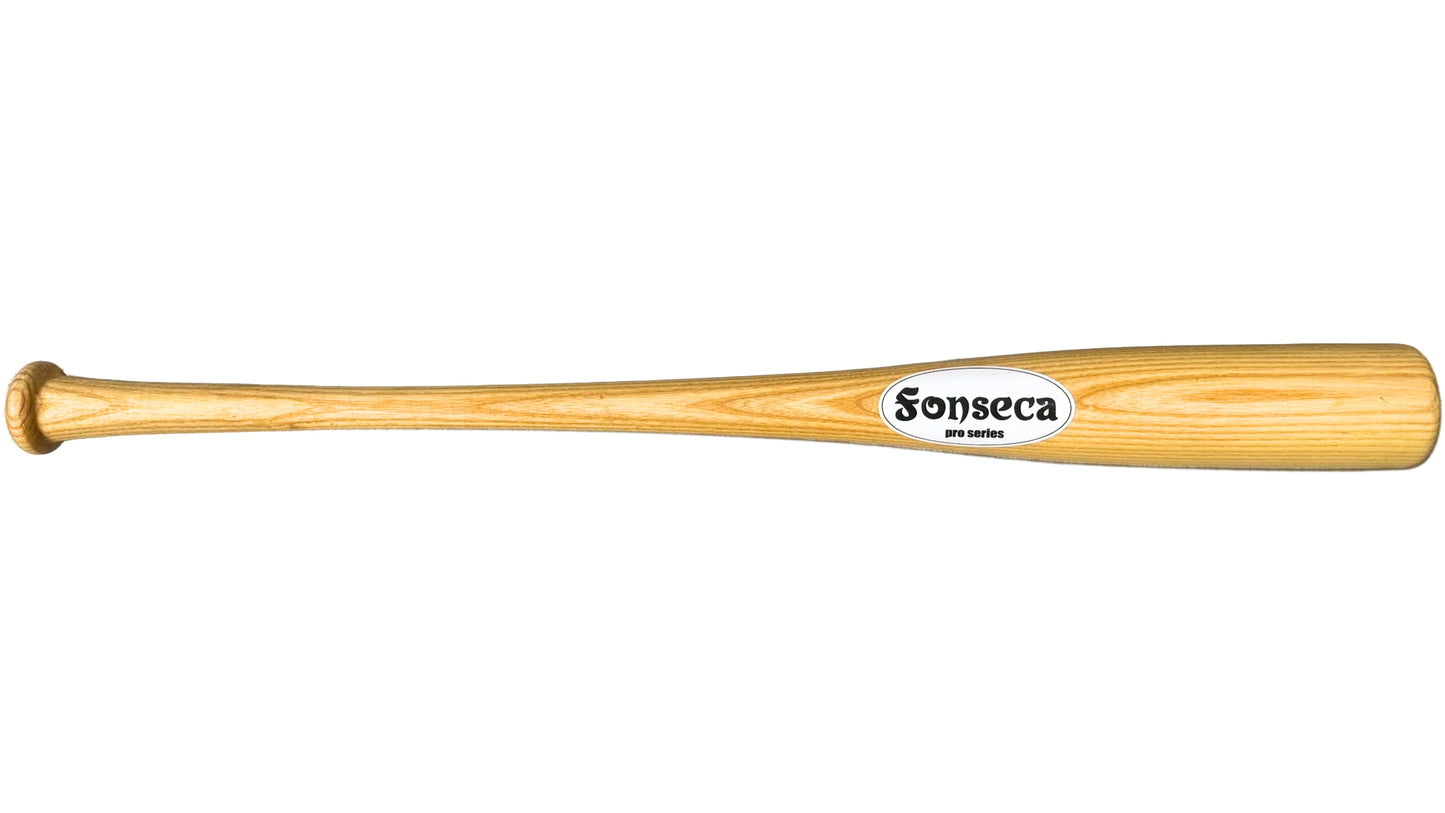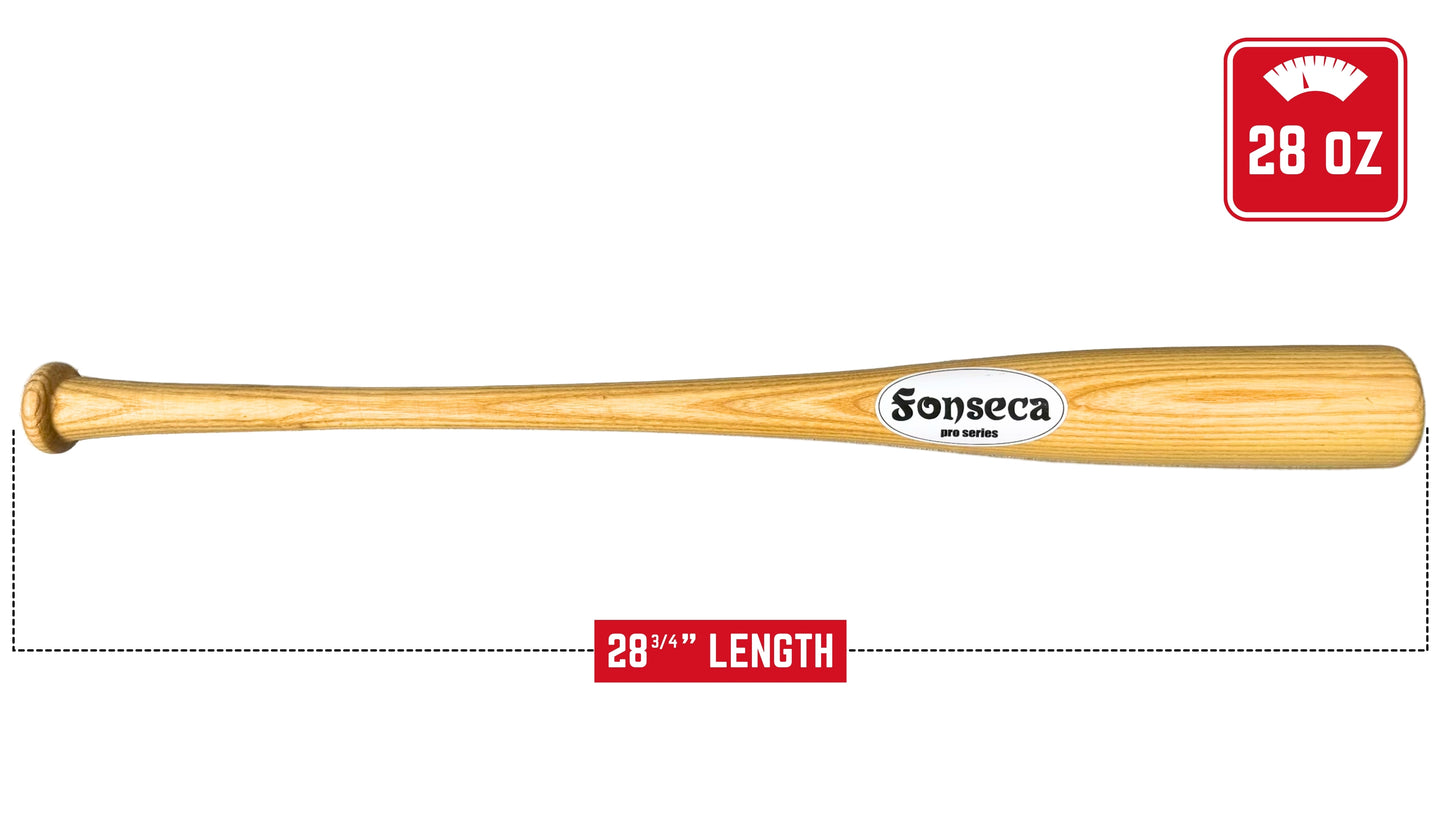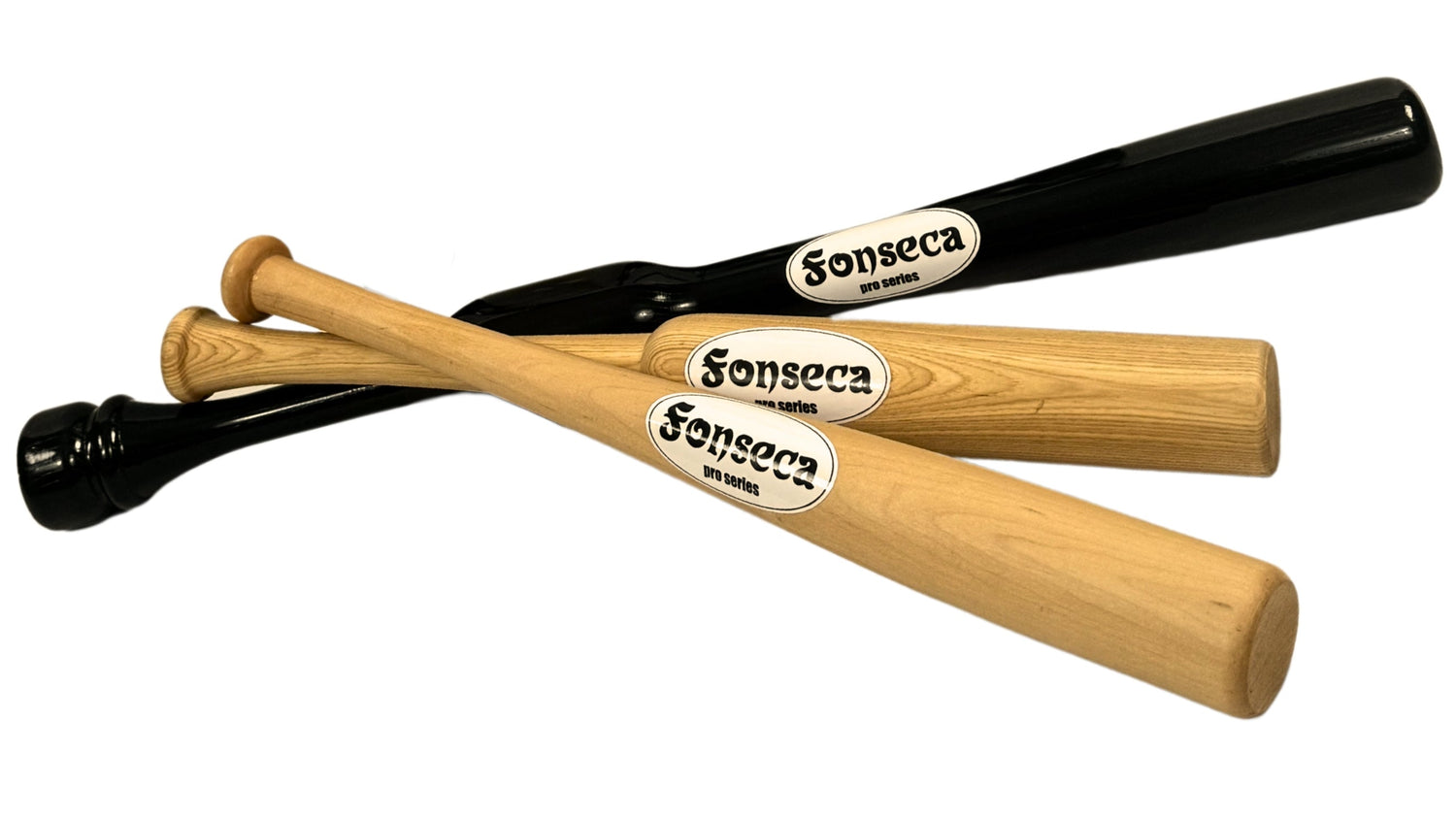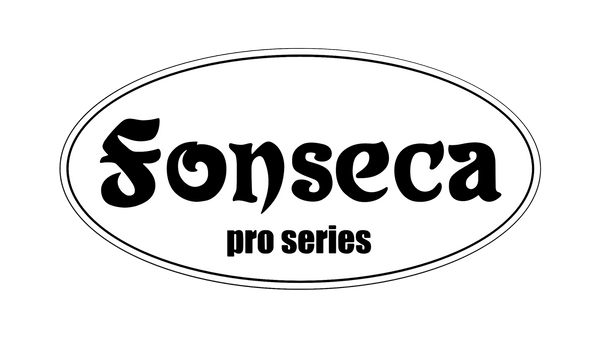Fonseca Pro Series
The Ball Hawk
The Ball Hawk
Couldn't load pickup availability
**The Ball Hawk is not designed for live Batting Practice or machine pitch**
Share



The Ball Hawk is mostly handle, featuring a short, 6 inch barrel. Precision is key with this training bat. The Ball Hawk is one of our most popular models, used by college and professional athletes, including Team USA softball athletes.
The Ball Hawk is mostly handle, featuring a short, 6 inch barrel. Precision is key with this training bat. The Ball Hawk is one of our most popular models, used by college and professional athletes, including Team USA softball athletes.
- Improved Hand-Eye Coordination: The small barrel size forces hitters to focus more intently on making precise contact with the ball, which can help improve hand-eye coordination.
- Bat Control: Training with a bat that has a shorter barrel can help hitters develop better bat control and swing accuracy. It encourages a more controlled and precise swing path.
- Enhanced Contact Point Awareness: The reduced hitting surface makes hitters more aware of the sweet spot, helping them learn to consistently make solid contact.
- Strengthening Hands and Wrists: The mostly handle design requires more effort from the hands and wrists, helping to build strength and improve grip.
- Quickness and Agility: The light and compact design of the bat allows hitters to work on their bat speed and quickness, which is essential for reacting to different pitch types and speeds.
- Focus on Mechanics: Using a training bat with a short barrel emphasizes proper swing mechanics. Hitters must ensure their swing is efficient and compact to make solid contact with the ball.
- Versatility in Drills: This type of bat is great for various drills, including one-handed drills, soft toss, and tee work. It can be used to isolate specific aspects of the swing for targeted improvement.
- Improved Hand-Eye Coordination: The small barrel size forces hitters to focus more intently on making precise contact with the ball, which can help improve hand-eye coordination.
- Bat Control: Training with a bat that has a shorter barrel can help hitters develop better bat control and swing accuracy. It encourages a more controlled and precise swing path.
- Enhanced Contact Point Awareness: The reduced hitting surface makes hitters more aware of the sweet spot, helping them learn to consistently make solid contact.
- Strengthening Hands and Wrists: The mostly handle design requires more effort from the hands and wrists, helping to build strength and improve grip.
- Quickness and Agility: The light and compact design of the bat allows hitters to work on their bat speed and quickness, which is essential for reacting to different pitch types and speeds.
- Focus on Mechanics: Using a training bat with a short barrel emphasizes proper swing mechanics. Hitters must ensure their swing is efficient and compact to make solid contact with the ball.
- Versatility in Drills: This type of bat is great for various drills, including one-handed drills, soft toss, and tee work. It can be used to isolate specific aspects of the swing for targeted improvement.
Warm-Up: Begin with dynamic stretches and mobility exercises to prepare your muscles and joints.
Perform light jogging or cardio to get your blood flowing.
Hand-Eye Coordination Drills:
Tee Work: Set up a tee and practice hitting balls off it, focusing on making solid contact with the short barrel.
One-Handed Drills: Use the bat with one hand (both right and left) to isolate and improve each hand's coordination and strength.
Soft Toss Drills:
Have a partner softly toss balls to you while you focus on making precise contact with the ball using the short barrel.
Aim to hit line drives and maintain control over the bat.
Swing Mechanics:
Use the bat to practice proper swing mechanics, emphasizing a compact and efficient swing path.
Work on maintaining balance and posture throughout the swing.
Strength and Conditioning:
Incorporate exercises that target the muscles used in hitting, such as wrist curls, forearm exercises, and core strengthening routines.
Cool Down:
Finish your session with static stretches to aid in muscle recovery and flexibility.
Warm-Up: Begin with dynamic stretches and mobility exercises to prepare your muscles and joints.
Perform light jogging or cardio to get your blood flowing.
Hand-Eye Coordination Drills:
Tee Work: Set up a tee and practice hitting balls off it, focusing on making solid contact with the short barrel.
One-Handed Drills: Use the bat with one hand (both right and left) to isolate and improve each hand's coordination and strength.
Soft Toss Drills:
Have a partner softly toss balls to you while you focus on making precise contact with the ball using the short barrel.
Aim to hit line drives and maintain control over the bat.
Swing Mechanics:
Use the bat to practice proper swing mechanics, emphasizing a compact and efficient swing path.
Work on maintaining balance and posture throughout the swing.
Strength and Conditioning:
Incorporate exercises that target the muscles used in hitting, such as wrist curls, forearm exercises, and core strengthening routines.
Cool Down:
Finish your session with static stretches to aid in muscle recovery and flexibility.
You should start seeing improvements in your swing mechanics and bat speed within the first few weeks of consistent practice. However, the exact timeline can vary based on your current skill level and dedication to the training plan.
You should start seeing improvements in your swing mechanics and bat speed within the first few weeks of consistent practice. However, the exact timeline can vary based on your current skill level and dedication to the training plan.



